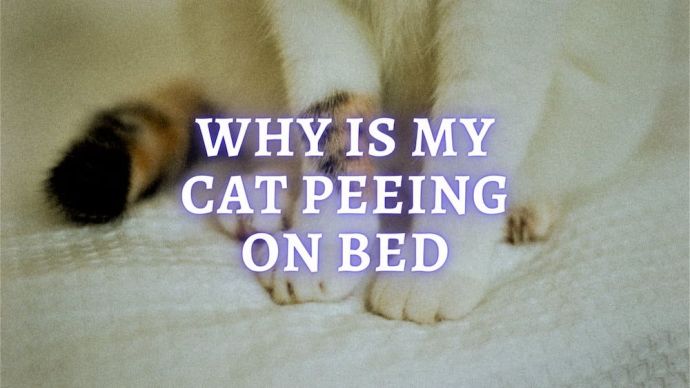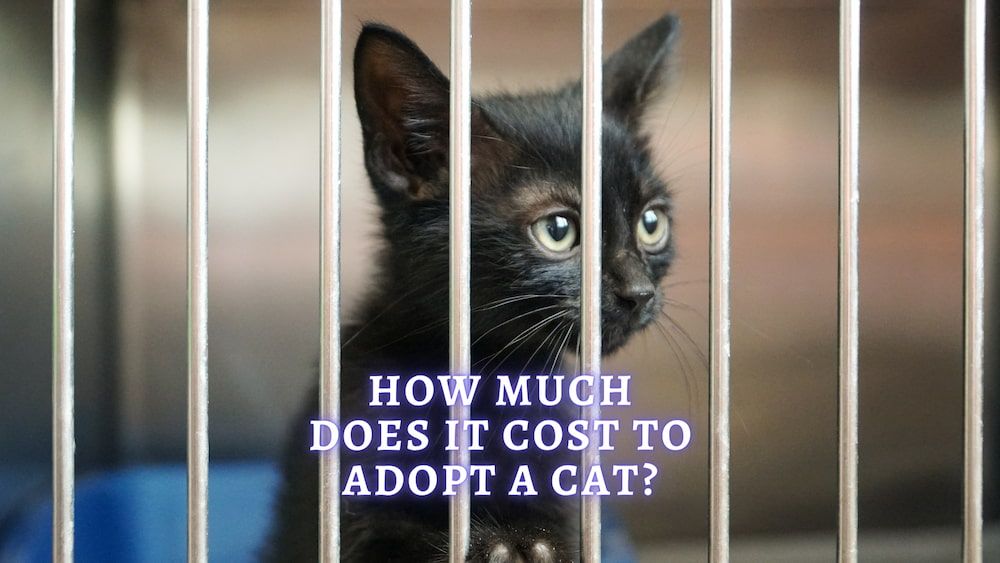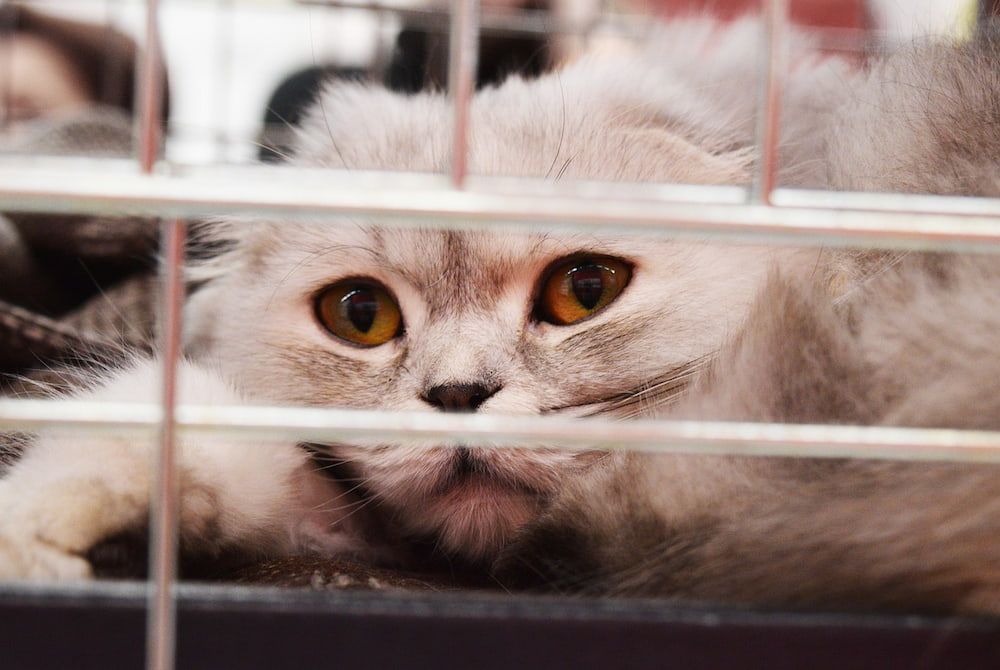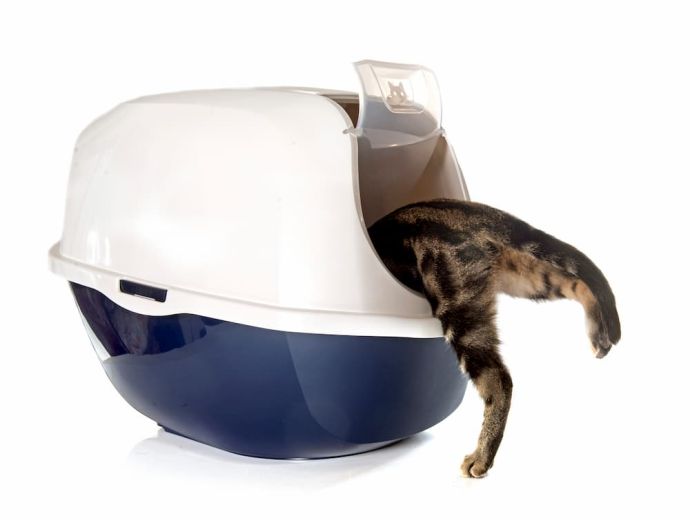How Much Does It Cost To Adopt A Cat? Costs to Consider When Adopting a Pet
Written by:
Author: Marissa Prizio
Marissa Prizio attended the University of New Hampshire and earned a bachelor's degree in biomedical Animal Science. Marissa has always enjoyed writing; she was even mixing literature classes into her science major in college. During her writing career, she has edited eBooks, written for a variety of websites, and created audio-visual courses for sustainability.
View all 36 articlesLearn about our editorial process and veterinary review board.
Viewed: 74
Updated on: 05/16/2023
Are you hoping to have a feline friend join your family? Every year, 3.2 million cats pass through animal shelters hoping to find a new home, so choosing to rescue is a great place to start your pet parent journey! [1] If you have already decided on adoption, there are a few more factors to consider, with one of the most common concerns being, “How much does it cost to adopt a cat?”
Pets are a financial responsibility, even if they are adopted. Understanding the costs associated with proper pet care and pet adoption can help you provide your companion with a long and enjoyable life.
How much does adopting a cat cost?
In most cases, rescuing a pet is much less expensive than purchasing a specific breed. This results from supply and demand since there are millions of homeless mixed-breed cats and much fewer purebred individuals. Depending on the cat breed, a purebred cat can cost thousands of dollars, while a mixed shelter cat is likelier to fall in the hundreds or even tens of dollars range.
Does this mean you can not rescue specific breeds? Absolutely not! All cats’ ages, breeds, colors, and sizes need their own forever homes. [2] However, it is worth noting that the adoption fee can vary depending on these factors. There is no single set of cat adoption fees for all shelters and rescues, and adoption fees range from about 10 to 300 dollars. [2] Sometimes, a shelter may waive the whole fee as long as the adopter is qualified to care for the pet.
The best way to determine how much it will cost to rescue your future pet is to simply contact shelters and rescues to ask, “How much does it cost to adopt a cat?” This information may also be easily accessible on the shelter’s webpage and include details like what is included in a pet adoption fee.
What’s Included In A Cat Adoption Fee?
Adoption fees vary from facility to facility because every shelter can provide different levels of care to its animals. Most shelters try to cover initial veterinary costs, including essential vaccinations and treatment for resolvable ailments. Having these factors proactively covered means your first vet visit will be less expensive.
Shelters are not businesses; their goal is to save lives by unintentionally minimizing the number of animals that enter the world and end up unhoused. This is why the shelter may complete spays and neuters upon the pet’s arrival. Spays and neuters can cost anywhere from 75 to 200 dollars per cat. [3]
The cost to rescue a pet is rarely wholly free, but considering all that can be included in an adoption fee does balance out. With major points of veterinary care already covered, your pet’s first vet visit will be much less costly than a feral or breeder-purchased kitten visit. You also do a service to the other animals at the shelter when you adopt, as that fee helps cover the cost of necessities like litter boxes and food.
Factors that affect adoption costs
The adoption fee at any animal shelter or rescue tends to reflect demand, and healthy and young cats tend to be the highest in demand. This generally translates to kittens having a higher adoption fee than other cats up for adoption. Adoption costs tend to drop as age increases and if a chronic medical condition is present. [2]
Senior or an older pet can still make an excellent companion, and the cost to rescue them usually tends to be much lower. A shelter that is tight on space or has a surplus of adult animals may even run a special to encourage people to adopt a little older cat. The more animals a shelter can adopt, the more homeless pets they can take in.
Seeking out shelters with a high intake may help you find a lower adoption fee and help the shelter maintain space for new animals in need.
Other Costs to Consider
The financial input of adopting a pet doesn’t stop at the adoption fee. Welcoming a cat into your family comes with many reoccurring and one-time expenses. Understanding the costs associated with being a pet owner can help you prepare to give your future pet a long, happy, and healthy life without breaking the bank. [4]
The reoccurring costs of owning a cat include:
- Pet Insurance;
- Litter;
- Preventative flea and tick treatment;
- Toys;
- Healthy food;
- Yearly appointments and initial medical care;
- Pet sitters;
The one-time costs of owning a cat include:
- Litter boxes;
- Food and water bowls;
- An ID tag;
- A pet carrier;
- Grooming Materials;
The ASPCA estimates that pet parents spend 600 dollars a year keeping their cats happy. [1] If you plan accordingly and minimize extra pet costs, like a regular pet sitter, you may save money.
Other events, like the medical care associated with a new pet, can be less predictable. Chronic conditions may result in a monthly premium on your pet insurance. Other expenses, like replacing a litterbox, water bowls, or a new scratching post, may also creep up on you. While it is true that, on average, a cat costs less than a dog, it is always best to have some money saved for emergencies.
Spaying or Neutering
Spaying and neutering are important parts of responsible pet ownership. Animal shelters exist because of pet overpopulation, which can be safely managed by these two surgeries. Many shelters will try to have rescue animals spayed or neutered before they go home with their new family. [3]
Sometimes, a shelter may not have the current funds, or kittens may be too young to spay or neuter. In these cases, you must factor in the veterinary costs associated with this procedure. When you adopt a pet, you are helping prevent pet overpopulation as long as that pet does not contribute to a litter that will end up back at the shelter, so rescue responsibly!
Microchipping Your Cat
Cats are curious and sometimes chaotic creatures. These furry escape artists can return to the shelter if they escape their new home. To get them back safely, a form of reliable ID is needed. An ID tag is a classic identification method, but cats wear collars less often than dogs and breakaway collars are popular due to collar strangulation risks. Microchips are considered a more reliable and permanent method of identification for pets.
All shelter animals are checked for a microchip upon intake, and if none are present, some places even microchip each pet before they get a new home. If your new cat is microchipped, your personal contact information can be added to the chip, and you will have one less veterinary procedure to worry about. If you rescue a pet that is not microchipped, your veterinarian can help with a very simple procedure. [1]
General Costs Of Adopting A Cat
Cat adoption is rarely a free process, but it is well worth the cost if you are prepared. Adoption fees vary depending on the pet you are interested in and the shelter adopting them out, so your best bet is to call and ask “How much does it cost to rescue a cat from your shelter?”
It is also important to keep in mind that the adoption fee might include a number of important medical procedures like vaccinations, spaying, neutering, and microchipping. Remember, adoption fees help all of the animals in the shelter, so your contribution is going to a good cause. Be mindful that adoption costs are not the only cost to rescue a pet. The cost of lifelong care should be considered before you bring any small mammals into your family.
FAQs
What is the best age to adopt a cat?
When it comes to deciding if you should look for a cat or kitten, the fee and amount of care they require will help you determine what age is best. [4] If your main concern is fees and overall cost, then the best age to adopt a cat is when the cat is a bit older. The lower fee will help you save money upfront. Otherwise, cats of any age can make great companions if you prepare for their arrival and consider their interactions with other animals in the house.
What is the downside of adopting a kitten?
Kittens are hard to turn down, but that doesn’t mean they are without downsides. Kittens are in higher demand at shelters, so the cost to adopt tends to be higher than that of adult cats. Aside from the adoption costs, kittens also require much more attention and care than an adult cat which can be a burden if you do not have the time or resources.
Is it OK to adopt one cat?
When you adopt a cat the shelter tends to have some information on that cat and its personality. Some cats love being the only pet in a household while others don’t mind spending time around dogs. Whether or not adopting one cat is a good idea depends on the cat in question. [4]
Should I adopt a cat one or two?
Some cats are fine on their own or around a dog, but others may be bonded pairs. Shelters tend to take notice of bonded pairs and attempt to adopt them out together. Since these pairs are emotionally attached, it is best for their mental and emotional health if they are adopted together. [4]
Article Sources:
- “Pet Statistics.” ASPCA, aspca.org/helping-people-pets/shelter-intake-and-surrender/pet-statistics.
- “Adoption Fees.” Animal Humane Society, 26 Apr. 2023, animalhumanesociety.org/resource/adoption-fees.
- “Things to Consider When Adopting a Cat from an Animal Shelter.” Hill’s Pet, hillspet.com/cat-care/new-pet-parent/why-consider-adopting-a-cat-from-an-animal-shelter.
- “Cat Adoption Checklist.” American Humane, 4 June 2018, americanhumane.org/fact-sheet/cat-adoption-checklist/.
 Cat Care Veterinary Telemedicine: How telemedicine can help manage chronic conditions in pets?
Cat Care Veterinary Telemedicine: How telemedicine can help manage chronic conditions in pets? - 568
- 0
 Cat Care Cat Peeing On Bed: Why Your Cat is Peeing on the Bed and How to Stop It?
Cat Care Cat Peeing On Bed: Why Your Cat is Peeing on the Bed and How to Stop It? - 607
- 0
 Cat Care Why Does My Cat Attack My Legs? 10 Reasons Why and What To Do About It (Vet-Approved Advice)
Cat Care Why Does My Cat Attack My Legs? 10 Reasons Why and What To Do About It (Vet-Approved Advice) - 46013
- 21
 Cat Veterinary Tips Cat Stomach Gurgling: Vet Advice on Why is Your Cat Stomach Gurgling?
Cat Veterinary Tips Cat Stomach Gurgling: Vet Advice on Why is Your Cat Stomach Gurgling? - 36469
- 4
 Cat Veterinary Tips My Cat Lost its Voice: Can Cats get Laryngitis? (Vet Advice)
Cat Veterinary Tips My Cat Lost its Voice: Can Cats get Laryngitis? (Vet Advice) - 23554
- 13
























